The Super Bowl Halftime show has become a coveted television spot for popular musical artists. The game is typically viewed by over 100 million people, and the artists asked to perform during the 13-minute halftime are some of the best in the world. We’ve been treated to sets by the Purple One himself, Prince, in one of the best halftime shows in history, only rivaling the King of Pop, Michael Jackson.
Iconic musicians, from Madonna to Beyoncé to U2, have been performing at the Super Bowl halftime show for more than 30 years and some of these performances truly stand the test of time—for the sheer magnitude of the singers' musicality, for the surprise guests and other reveals, or for the controversies they sparked.
Here are the most memorable Super Bowl Halftime Shows.
Michael Jackson, 1993
This performance basically invented the modern halftime show, with a celebrity act performing hits rather than positive-thinking musical troupe Up With People or a marching band; its huge ratings were enough reward to start pivoting the bookings more and more towards stars. Jackson’s performance of hits including “Billie Jean” and “Heal the World” helped cement his reputation, in the leaner years post-Thriller, as an enduring star.
*NSYNC / Aerosmith / Britney Spears, 2001
Collaborations are a tricky beast; 2003’s Shania Twain/No Doubt/Sting lineup felt like a group of people who’d never met, for instance. But this merger of a classic act and the boys of the moment was a smashing success even before Britney Spears, Mary J. Blige, and Nelly came out for a show-closing group number. This felt less like an attempt to check demographic boxes than a big-tent celebration of pop at its best.
U2, 2002
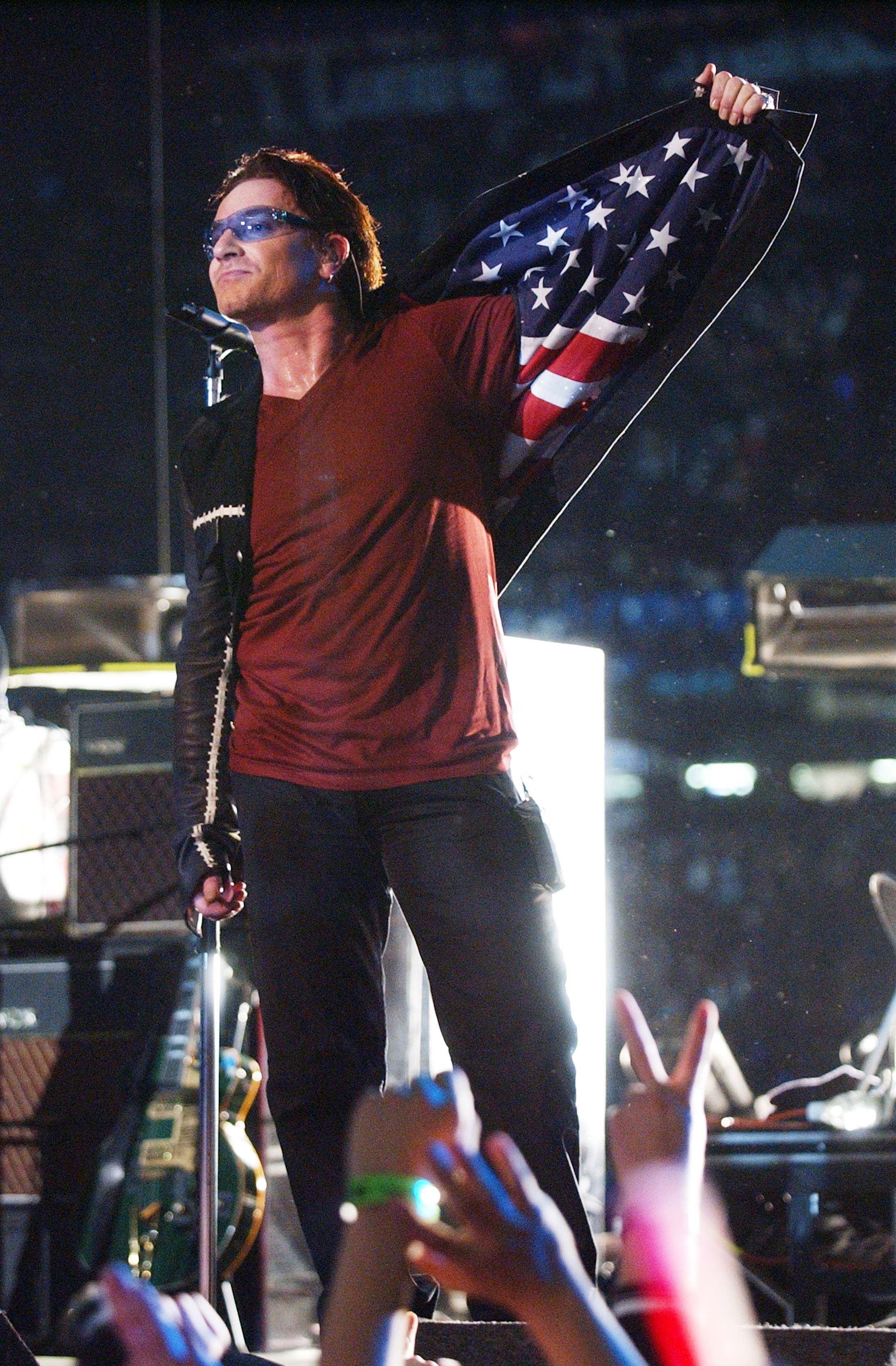
This show was supposed to be performed by Janet Jackson (there’s an alternate history in which her 2004 duet with Timberlake never happens and she’s, today, still on top of the world). But after September 11, 2001, a more somber act was chosen; U2’s reverent three-song act, closing with “Where the Streets Have No Name,” was one of the most resonant tributes in the months following the terror attacks.
Justin Timberlake / Janet Jackson, 2004
The music for this show (which also featured the artist then known as P. Diddy, Nelly, and Kid Rock) was negligible. But the show-closing moment in which Justin Timberlake ripped off Janet Jackson’s detachable bodice resonated for years on a variety of levels: For Jackson, whose promotion of her new album was subsumed by controversy, it marked the beginning of the end of her career. For the NFL, it meant a temporary end to engagement with contemporary artists. And for the culture at large, it kicked off a debate over what was appropriate to air on television that was tied up in the relative cultural conservatism of the time.
Prince, 2007
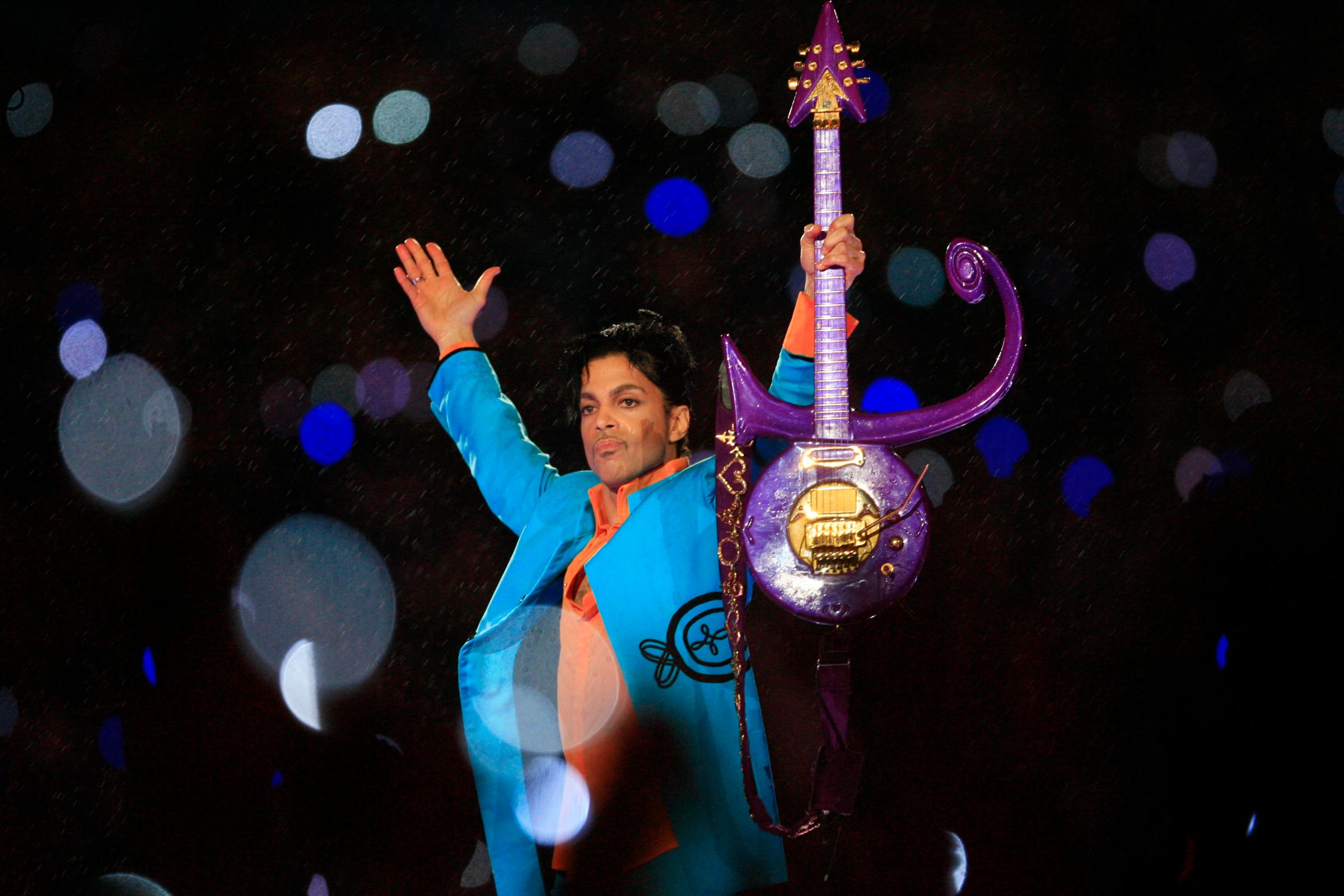
Possibly the qualitatively-best solo performance ever, Prince’s appearance at the Super Bowl interpolated covers of Bob Dylan and the Foo Fighters with hits from his album Purple Rain. The title track closed the show amid pouring rain.
Bruce Springsteen, 2009
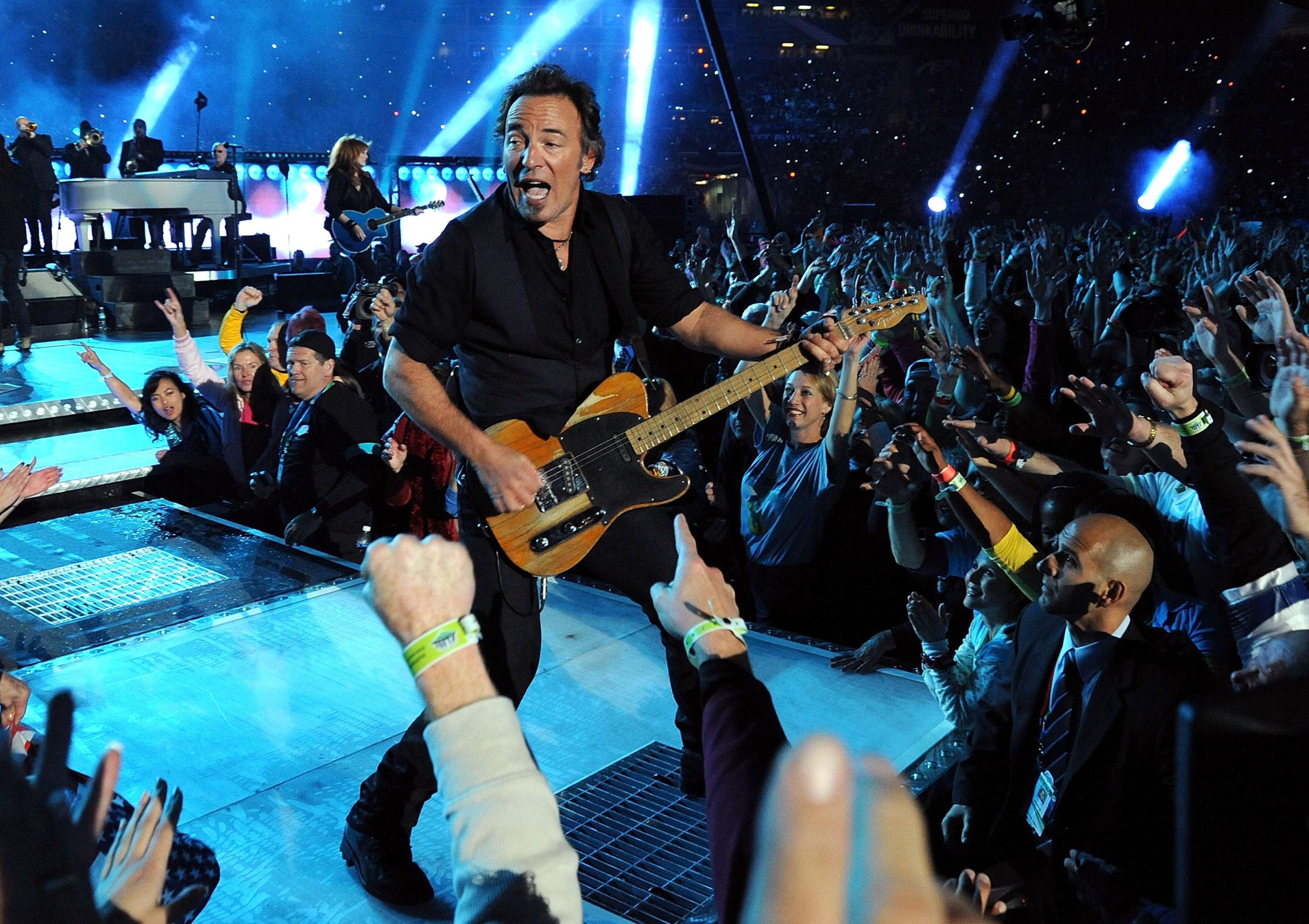
The years following Janet Jackson’s “wardrobe malfunction” were a stretch of male legacy acts, with diminishing returns. (Neither Tom Petty nor The Who, despite their large fan bases, set pulses racing among the uninitiated.) But it was hard to fault Springsteen’s wild energy as he promoted both back-catalog hits and new material; no other performer could make sliding into a camera crotch-first seem so charming.
Black Eyed Peas, 2011
The most popular band on earth at the time managed to keep one-upping itself from moment to moment: You thought the robot costumes were cheesily over-earnest? Well, check out Fergie belting out “Sweet Child o’ Mine,” backed up by Slash on guitar. This was the band’s last hurrah, of sorts; they have yet to release new material since their performance.
Madonna, 2012
The queen of pop came in for some criticism for relying heavily on featured acts (LMFAO? Really?), for devoting so much of her act to lesser new material, and for apparent lip-synching. But there was something majestic about her show-closing “Like a Prayer.”
Beyoncé, 2013
It’s hard to remember now, but at the time she was booked to play the Superdome, Beyoncé was just a popular singer, not a hyper-powerful force. Her ambitious, well-executed set changed the conversation around and kicked off a year of anticipation for her fifth album, which wouldn’t come for some eleven months.
Bruno Mars, 2014
Mars solidified his grip on music’s A-list with a performance so energetic that it made guest stars the Red Hot Chili Peppers seem unnecessary. Most memorable, perhaps, was Mars’s lengthy show-opening drum solo.
Coldplay, Bruno Mars, Beyoncé, 2016
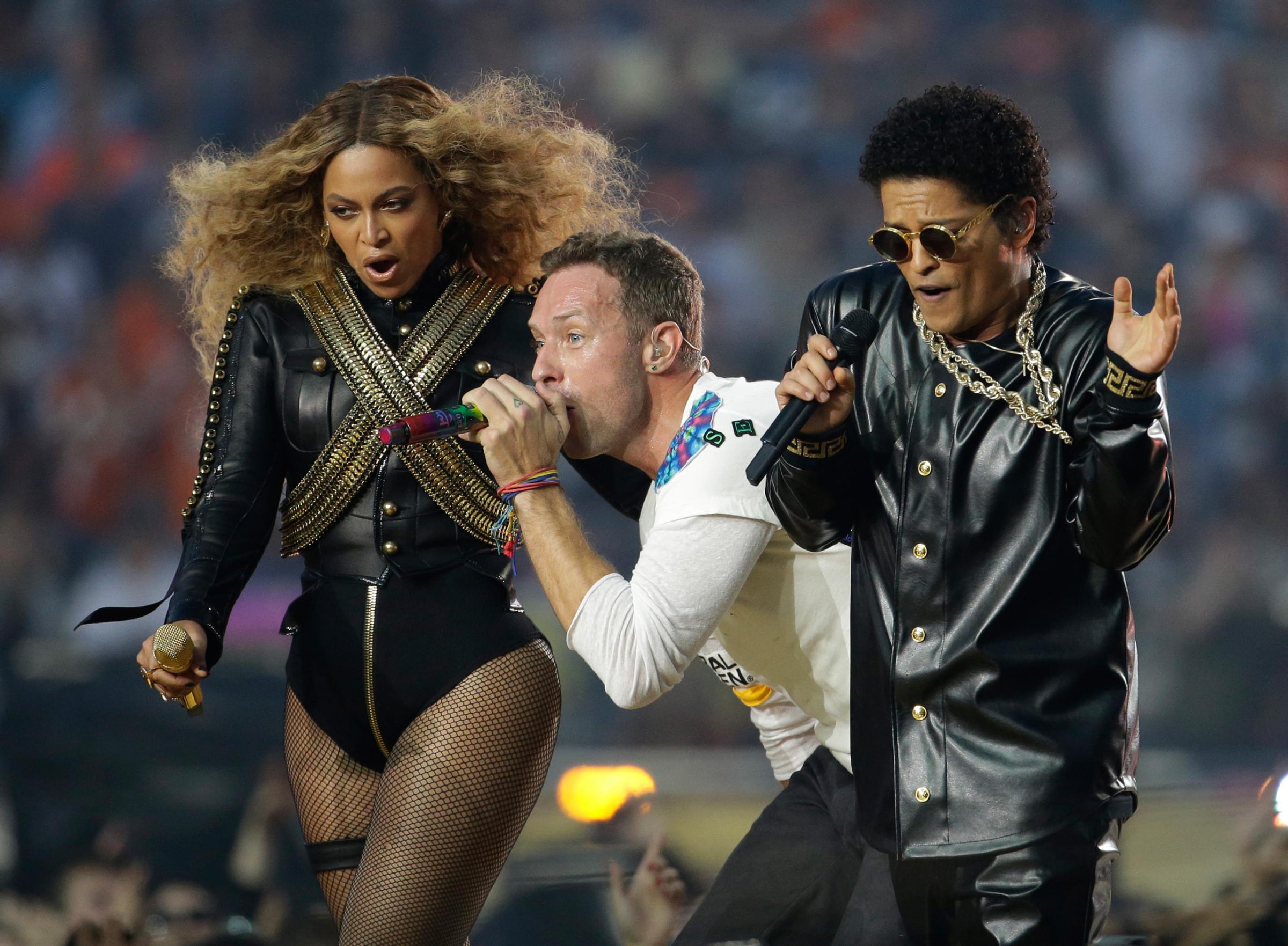
While Coldplay headlined the 2016 Super Bowl halftime show, the band's performance was undoubtedly overshadowed by Beyoncé and Bruno Mars. Coldplay opened and closed the show, starting with their instantly recognizable songs, “Viva La Vida,” “Paradise,” and “Adventure of a Lifetime.” Then, Mars invited Mark Ronson to do their wildly popular collaboration “Uptown Funk” and set the stage for Beyoncé to make her appearance with her dancers donning Black Panther attire for the rallying “Formation.” Mars and Beyoncé had an energetic dance-off to each other’s songs before exiting the stage, letting the band close out the show with a touching rendition of “Fix You” as a montage of past performers played.
Lady Gaga, 2017
Lady Gaga is known for her over-the-top performances filled with pyrotechnics, difficult choreography, and incredible vocals. During her Super Bowl Halftime, the audience was treated to all that and more. The pop star started out by giving a soulful rendition of the “Star-Spangled Banner” before leaping off a ledge and descending onto the main stage in the middle of the stadium. Gaga had a wealth of popular songs to choose from and stuck to the classics: “Love Game,” “Just Dance,” “Born This Way,” “Poker Face,” and more, before closing out with “Bad Romance.”
Jennifer Lopez and Shakira, 2020
In 2020, two Latin superstars were asked to share the stage of the Super Bowl Halftime show, and it was a sight to behold. Shakira and Jennifer Lopez are undoubtedly electrifying performers on their own, but together, they delivered a thrilling ride through their respective discographies. Shakira opened the show with the indelible “She Wolf” before transitioning to the rock-forward “Empire” from her 2014 album of the same name and playing the guitar. She smashed out more of her hits like “Whenever, Wherever” before singing some riffs to “I Like It,” making way for Bad Bunny to surprise the crowd with his verse.
Lopez kept the crowd hyped up as she entered holding a pole, singing “Jenny From the Block” and dishing out killer dance moves. Her army of dancers backed her up while she sang through her chart-toppers like “Ain’t It Funny,” “Get Right,” and “Waiting For Tonight,” the latter of which she sang while showing off the pole skills that made her turn in the 2019movie Hustlers so iconic. J Balvin was brought on stage halfway through her performance and busted out “Que Calor” and did “Mi Gente” with JLO.
There was so much to love about this performance and for those who want to know how it came together, Netflix released a documentary about the process of making the show what it was.
Rihanna, 2023
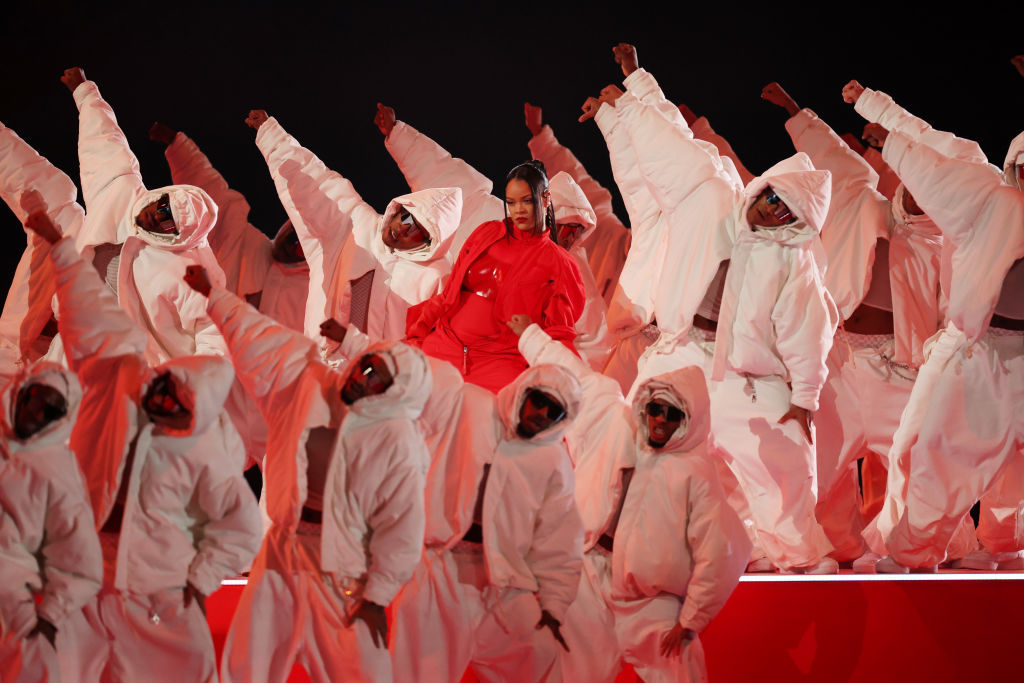
Given that Rihanna has not put out a new album since 2016, it was a surprise that she did the halftime show in 2023. Still, her performance shocked audiences from the start, when her half-zipped red jumpsuit revealed her growing baby bump for just a moment. After cameras zoomed out, viewers were left guessing whether the star was actually pregnant as she ran through her biggest hits like “Where Have You Been,” “Only Girl (In The World),” “Rude Boy,” “Umbrella,” and more.
More Must-Reads From TIME
- Dua Lipa Manifested All of This
- Exclusive: Google Workers Revolt Over $1.2 Billion Contract With Israel
- Stop Looking for Your Forever Home
- The Sympathizer Counters 50 Years of Hollywood Vietnam War Narratives
- The Bliss of Seeing the Eclipse From Cleveland
- Hormonal Birth Control Doesn’t Deserve Its Bad Reputation
- The Best TV Shows to Watch on Peacock
- Want Weekly Recs on What to Watch, Read, and More? Sign Up for Worth Your Time
Write to Moises Mendez II at moises.mendez@time.com